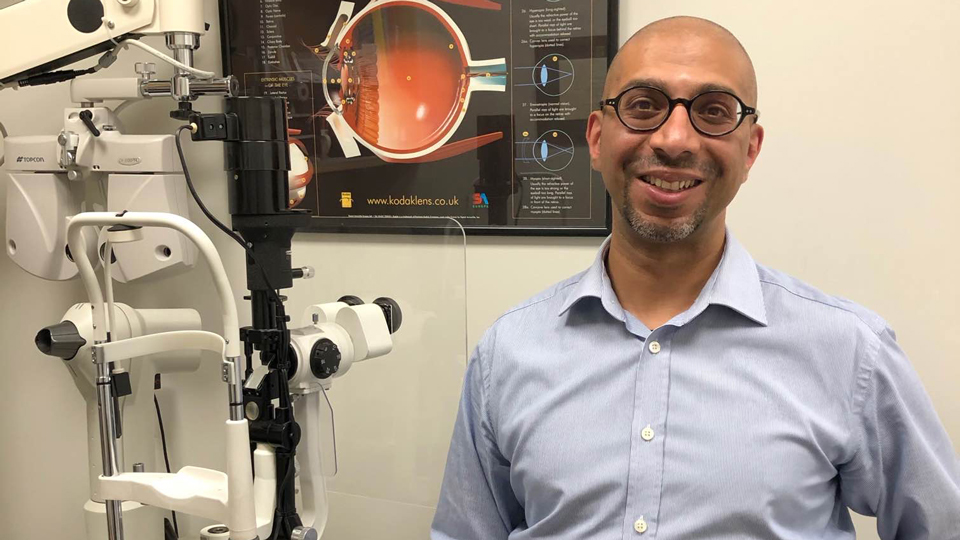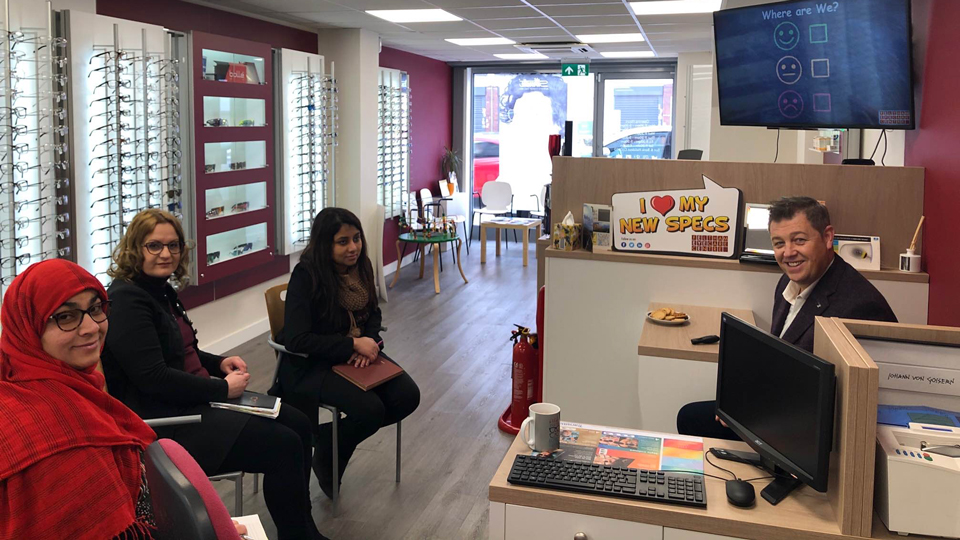- OT
- Life in practice
- Business management
- My priority: creating engaging videos
My priority: creating engaging videos
Mohamed Ayyaz Kasmani of Feltham Eyecare on relaying post-lockdown safety messages through animated video

24 August 2020
Using a network
I'm part of an optical business growth group run by our coach, Simon Burgess of Think Training. We would normally meet face-to-face every three months. During the lockdown we were on Zoom meetings every week to plan the way forward. Simon Burgess wanted to add more value and so offered to make an explainer video animation for us. The video was designed by him, so he deserves a lot of credit for its creation.
On our weekly Zoom call, eight of us discussed what key messages we wanted to highlight within the animation. We agreed that we wanted our patients to feel safe and secure and to know that we were still convenient to visit, hence messages relaying social distancing, locked door policies, screens in the practice, a complete infection control policy in place, and so on.

From there, Simon produced the animation for us and I then uploaded it to YouTube, LinkedIn, and Facebook. It's a much more effective way of communicating with our patients. I also sent it out via email to patients via my newsletter, with a written explanation.
The power of video
I personally find that videos are more effective in communication when compared to someone reading a piece of text. I've got signs in my window, and even then, people ignore the signs in regard to wearing a mask when they come in.
Pre-empting this type of marketing helps. At the same time, we've done a video on infection control, preparing people for coming back into practice. I've also got explainer animated videos on dry eye, ortho-k and optical coherence tomography (OCT). These are sent to patients, so that they are prepared when they come into practice. We've also got videos on contact lenses, and also explaining how to care and look after your eyewear, which is sent after they have collected their spectacles.
Video is quickly becoming the most powerful and effective marketing tool for businesses. It is simple and easy to understand, and can help customer comprehension of even the most complex products and services in around 60 seconds. Our clients are more likely to pick up on it than to decide to read a paragraph of instructions. Coming back into practice, we've all been doing our risk assessments. Even my practice team would find it difficult to write out a risk assessment, whereas if they've watched the video to start off with, it begins to show them what they need to do.
We also have subtitled versions that we use on our TV in the waiting area. Patients like watching them, and often ask questions about ortho-K or OCT afterwards. It is very important that the videos that are shown to patients are to the point, as well as giving the key messages and raising interest.
Visual training is also extremely effective and we subscribe to Practice Made Perfect, which is an online optical training video programme including sessions on how to improve what we say to our patients and our general communication. This helps us look at our whole patient journey and as a team, we make improvements to offer a better patient experience.
It is very important that the videos that are shown to patients are to the point, as well as giving the key messages and raising interest
The way I'm working is to reduce the amount of time I spend in the room, and to do my history and symptoms over the phone with the patient the evening before. At the same time, I will say to them, "I'm going to be sending you a YouTube link, just to explain what you need to do when you come into the practice - a one-minute video. Please watch it." So, they're all pre-planned and ready to come in. Bit by bit, it's a case of educating your own clients.

This type of video is going to be sent out through our newsletter. We find that on average less than 20% of people open their newsletters when they receive them. So, this is going to have to be a continuous consistent message going across all of our platforms: YouTube, emails, links in recalls, in-practice screens, Facebook and newsletters. All reminders should point patients towards the video. Patients will remember your brand, if you personalise your video to your practice.
The same thing goes with what we've got in the window. The messages have to be more visual than just text or printed messages telling patients what to do. There has to be a level of visual and sound communication with our patients.
Spreading the message
My business coach, Simon, is also persuading me to work on developing my video blog to get more information over to my patients about what makes us different - especially clinically.
A picture says 1000 words, so I don't know how many a video says
One of the things I've always tried to do, after getting GDPR permission from the patient, is share a small video on Facebook. For instance, at the beginning of lockdown I spoke about how we were here for patients if they need any services, and also, that we’d be there for essential and emergency eye care. That helps because it does lift a practice’s profile.
The same thing goes with patient recommendations or patient reviews. The most powerful ones are video testimonials as opposed to having a written testimonial and placing it on your webpage. A picture says 1000 words, so I don't know how many a video says.
I don't think there's a single important message for patients. There are many and the number one right now is that we're still here for our patients, and that they are our priority and at the same time, we want them to stay safe. So, it's a three-factor case. When they need us, we're here for them.
Credit to Simon Burgess of Think Training Ltd and Practice Made Perfect for producing the video.


Comments (0)
You must be logged in to join the discussion. Log in